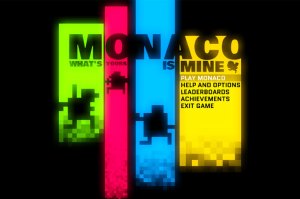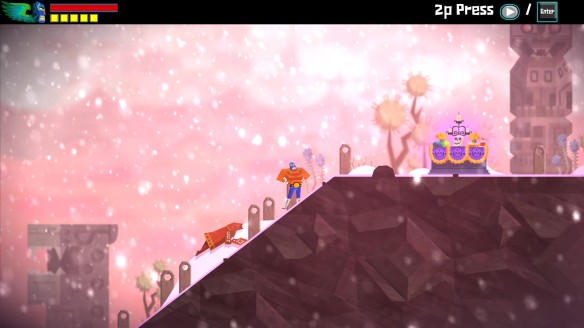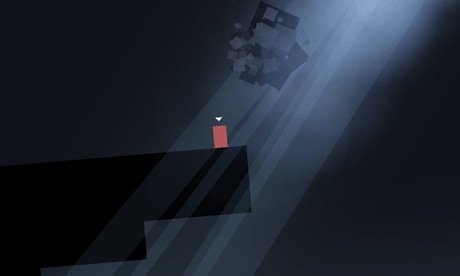
So the summer is here, and with it comes sunshine, sandals, suntans, and, most importantly, the Steam Summer Sale. It has been a joyous week and a half of scooping up dirt cheap video games, especially interesting titles that I wouldn’t normally be interested in. This year for the summer sales I gave myself a limit: no titles over ten bucks. It was a tough rule to live by with such delicious deals on games like Bioshock Infinite and Far Cry 3 staring me and my freshly built PC in the face, but I resisted and instead of blowing my cash on few big names, instead I scooped up a collection of cheap, but no less exciting titles. What follows are three of my absolute favorite purchases from the Steam Summer Sale. Each goes to show that it is not the cost or the size of the developer that determines an exceptional gaming experience.
Bit Trip Runner 2

When I was online and any of my Steam friends asked me which game they should pick up during the sale, without hesitation I recommended Runner2. While the game is utterly ridiculous to look it, Runner2 certainly stands out as one of the most consistently enjoyable and compulsively playable gaming experiences I have had recently. Runner2 puts you in the monochromatic sneakers of Commander Video along with a cohort of other zany characters as you move through short stages avoiding obstacles and collecting different items, all to the incredible, constantly evolving soundtrack of your own making. Phew, that sentence was almost as long as one of the levels. You see, Runner2 is at its heart a music game, where instead of playing plastic instruments you make music with every action performed on screen, be it collecting gold or avoiding obstacles. The result is music that is equally as rich and layered as any music game to date.

Seriously, the music in this game is as ridiculous and utterly engaging as the pitch perfect gameplay and symphonic art design.
Runner2 is a masterpiece where you guide Commander video through increasingly complex obstacles in environments that range from a countryside to a beach-side harbor, to the 8-bit world reminiscent of the first game in the series. But unlike the first game, Runner2 makes a multitude of improvements that make the game both approachable and more immediately playable. The controls are perfect, a requirement for a running game like this where mistiming how long you hold the jump button might completely botch your run. That being said, the inclusion of checkpoints and multiple difficulty levels along with a simple yet increasingly complex series of commands makes the levels consistently challenging but always fair.

Is that a pickle floating there on the screen above a branching level layout? Why yes it is and it is par for the course.
I don’t even want to mention collectibles like new characters, tons of character skins and the 1000s of collectible gold pieces makes this a game worth playing and replaying. I was able to get through every stage on the “Just Right” or normal difficulty with most of the collectibles in around 6 or 7 hours, but I missed a ton of the secret stages and of course the two other difficulty levels, each of which contributes to the dynamic music of each level. And again, that music…. wow, get the soundtrack edition like I did because you will want to listen to these tunes again and again, even when the game stops. They are that good. So if you like music, runners, or even if you just need some more joy in your life, check out Runner2. If this game can’t make you happy you need medical attention.
The Swapper

I hadn’t heard much about this one until I scooped it up on a flash sale, but I am more than thrilled that I did. Rarely are puzzle games so innately thought provoking as The Swapper with its eerie, claymation-esk art style and brain teasingly difficult puzzles. The first time I explored this strange, science fiction world I was immediately sucked into the story of my isolated spaceman and his (or is it her) swapper machine.This device allows the player to create four copies which then parrot the player’s movement unless the character decides to “swap” their soul into them in the same way the portal gun shoots different colored portals. But while this is the only gameplay mechanic the player is given, it is more than sufficient to make the complex puzzles that are the game’s bread and butter.

This game puts multiple personality disorder in a whole new light.
These puzzle rooms slowly introduce different obstacles like different colored lights that change the game in subtle but increasingly nuanced ways. For example, you can’t create new clones in blue light but if you can manage to get a clone in there then you can swap into it (if that makes any sense at all). While most of these puzzles are ingenious and that moment when you finally crack the code totally worth waiting for, there were a few where the solution required pixel perfect placement of your clones in order to succeed, which creates some rather frustrating moments where the solution may not seem apparent despite the fact you may be just inches away from completing it correctly. Unlike portal or other recent puzzle titles, this game is certainly a thinking man’s game that requires careful pre-planning and trial and error to accomplish some of the more difficult brain teasers.

I kept expecting a space monster to come out and eat my clones, but it never happened.
But the puzzles, while brilliant, are complemented by an incredibly haunting art design. Sound, lighting and especially the environments themselves are all worth mentioning, as together they create a haunting and mysterious world that I couldn’t get enough of. The art style is characterized by a type of claymation feel, with soft squishy bodies that is offset by some truly disturbing sound design. The first time one of your clones falls to its death you have no choice but to shudder. While the majority of The Swapper takes place on a space station of some kind, the environments are constantly shifting between blue industrial spaces to lush greeneries and unsettling white laboratories. Each area brings with it new places to explore and new puzzles to solve even while teasing out the game’s narrative. And what a narrative it is, filled with the philosophic ponderings equal to many a good science fiction novel. For example, are these disposable clones that you are forced to create and discard ad nauseum simply empty husks or something far more disturbing? The narrative is smart enough not to simply toss out empty answers but is always evoking deeper mysteries and moral implications. By the narratives end, when faced with a hard choice, I was fully entranced by the moral implications of this incredibly rich little puzzle game. The Swapper is short, clocking in around 3 hours or so not including the pursuit of the rumored hidden rooms that the Steam achievements hint at, but like Limbo and other indie puzzlers, this is a one-off experience that probably would lose much of its charm in a second playthrough. Still, this is a journey worth making and a true testament to the power of storytelling and art design in gaming, even if some of the puzzles are a little more frustrating than they need to be.
Monaco: What’s Yours is Mine

Heist movies like Ocean’s 11, Reservoir Dogs and The Italian Job are some of my favorite films, so when I heard about the highly anticipated indie game with the long title and amazing pixelart style, Monaco: What’s Yours is Mine, I was totally on board. Of course, that was three years ago when developers Pocketwatch Games nabbed an IGF award for “Excellence in Design” back in 2010. Despite falling off the face of the planet for a while like some other notable indie titles (Fez I’m looking at you), I am glad to report that this top-down stealth action puzzler defintely demonstrates the high level of polish expected of such a long development cycle.

You’ve got to see this one in action to get its simplistic but always frenetic energy. Screenshots don’t do it justice.
Monaco‘s concept can be traced all the way back to Pac-Man, except replace the dots with gold and the ghosts with policemen and you get the foundation of the gameplay. Now, add in the idea that your Pac-Man like avatar can only see what is in front of him, same with the various people out to apprehend you, and life as a thief gets a lot more interesting. Further differentiating itself from its fore-bearers, in Monaco you have the ability to choose a thief with a particular skill set. My personal favorite is the Cleaner, who can sneak up on unsuspecting enemies and knock them out for a short period with chloroform. Or maybe you would prefer the hacker, who can release viruses from electrical sockets to knock out power in any device, be it a triplaser or electronically sealed door. Your character selection has serious implications on how you play, allowing the more skilled player to slip past guards in increasingly clever ways.

The Cleaner is a cold son of a gun, but he gets the job done quick.
But sometimes the fun really begins when the guards are alerted, especially in multiplayer, which is definitely the way the developers want you to play. As the other players may or may not roam around the environments like bumbling fools instead of suave thieves, it is likely that someone will gain the attention of the fuzz, creating a mad dash for the loot and exit before you are apprehended. These moments are hilarious and thrilling, and somehow never infuriating like they certainly could be (and often are in games like Splinter Cell or other stealth titles). Your character’s stout health bar helps with this, and other players can revive you if you happen to fall, though they might not until after they are done cleaning out the level’s cash. The environments themselves are often varied containing multiple levels and numerous types of obstacles, but each level is never more than 5 to 10 minutes, especially in multiplayer. Playing the game alone is really an entirely different, though certainly enjoyable experience. The few levels I did alone I took at a much slower pace, often avoiding notice completely and stripping clearing each environment room by room. It is really like getting two games in one, as multiplayer is so frenetic whereas single player is much closer to a true top down stealth title. I am actually quite shocked how natural both styles of gameplay actually work, but that only goes to show you how polished Monaco actually is.

If you have a sharp eye you can pick out the monkey following one of the players at the bottom of the shot. The monkey prefers gold instead of bananas.
The art design is top notch, with excellent pixelart sprites and a phenomenal use of lighting. The game runs with a brightly lit and colorfully animated world that perfectly fits the neon drenched European local of Monaco. The story, while cute, is nothing that really ever caught my attention, which is fine because the game plays like more of an arcade game than anything. The inclusion of a robust level editor, which promises a consistent stream of new and challenging levels gives more than enough reason to come back again and again to Monaco. I am really excited to see what this little indie gem evolves into, as it certainly has all the right components to be a hit. Monoco: What’s Yours is Mine is the arcade heist game that demonstrates what happens when a talented design team decides to take a simple concept and turn it into an indie masterpiece.
————————————————————————————-
So what do you think about my selections? Any cheap indie titles that should be on this list? What did you pick up on the summer sale? Any unexpected purchases that played out in your favor? Let me know in the comments below!























